In Avian Reservoirs: Virus Hunters and Birdwatchers in Chinese Sentinel Posts, Frédéric Keck offers a new ethnographic study of how human and animal relations are being reshaped in anticipation of future bird flu pandemics in Hong Kong, Singapore and Taiwan, focusing on the varied techniques used to prepare for potential outbreaks. This is an impressive, sophisticated and rewarding book that provides us with a timely toolkit to consider the conditions that develop different techniques of preparedness when it comes to zoonotic disease and pandemics, writes Justin Lau.
Avian Reservoirs: Virus Hunters and Birdwatchers in Chinese Sentinel Posts. Frédéric Keck. Duke University Press. 2020.
Find this book (affiliate link): ![]()
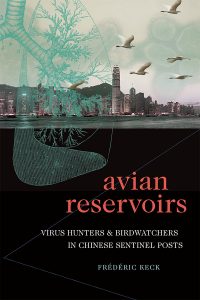 Taking the perspective of animals is at the core of the anthropology of hunter-gatherers and Amerindian societies. In the past decades, prominent anthropologists such as Rane Willerslev and Eduardo Viveiros de Castro have shown how perspectives can be ‘exchanged’ between humans and animals in indigenous societies. Whilst an expanding body of literature has brought attention to the wider relationship between human and non-human beings in different settings (e.g. Natalie Porter and Ilana Gershon 2018), comparatively little attention has been paid to the techniques and technologies that enable the exchange of perspectives between humans and non-humans. Even more rarely have we been told the significance of assuming non-human perspectives in relation to the epidemic or pandemic.
Taking the perspective of animals is at the core of the anthropology of hunter-gatherers and Amerindian societies. In the past decades, prominent anthropologists such as Rane Willerslev and Eduardo Viveiros de Castro have shown how perspectives can be ‘exchanged’ between humans and animals in indigenous societies. Whilst an expanding body of literature has brought attention to the wider relationship between human and non-human beings in different settings (e.g. Natalie Porter and Ilana Gershon 2018), comparatively little attention has been paid to the techniques and technologies that enable the exchange of perspectives between humans and non-humans. Even more rarely have we been told the significance of assuming non-human perspectives in relation to the epidemic or pandemic.
Avian Reservoirs is the result of the French anthropologist Frédéric Keck’s decade-long research on zoonoses – diseases that can be transmitted from animals to humans. In this challenging yet rewarding ethnography, Keck explores how human and animal relations are shaped in anticipation of the outbreak of bird flu pandemics in Asia. Against the backdrop of the ongoing COVID-19 pandemic, which many believe may have strong connections with unknown wild animals and has since infected more than 3 million people, the publication of this thought-provoking and brilliant book is no doubt timely. Avian Reservoirs inspires us to re-examine our relations with animals and techniques of dealing with zoonotic disease.
Using the concept of avian reservoirs – ‘a space where human and nonhuman animals are connected by invisible entities called “microbes” that can be captured, classified, and mapped’ (4) – Keck aims to discern diverse techniques used in configuring and handling avian viruses in Hong Kong, Singapore and Taiwan. Of central concern is what birds, potentially carrying a virus, reveal about complex, intertwining human-animal relations, and how they give rise to the global imaginary and future orientation of pandemic. Through the lens of various techniques of prevention and preparedness that emerge during the navigation of zoonosis, Keck takes the flu virus mutation as a mode of inquiry and challenges readers to see pathogens from the perspective of birds by examining techniques of preparedness in confrontation with avian influenza. In so doing, he argues that we could better recognise human dependence on other species and thus decentre the human as having dominion of the ecosystem.
To enable readers to take animal perspectives seriously, Keck creatively juxtaposes microbiologists and birdwatchers with hunters, and public health officials with pastoralists, in relation to the anthropology of hunter-gatherers. The former alliance indicates an ontology of preparedness that applies ‘cynegetic’ (hunting) techniques and concepts of ‘sentinels’, ‘simulations’ and ‘storage’ to avian influenza. These ‘cynegetic’ techniques are similar to the hunting techniques applied by hunter-gatherers, hunting down and storing information about viruses through the observation of ‘sentinels’, the indicators of infectious disease, and the ‘simulation’ of virus mutation. Conversely, the latter alliance denotes an ontology of prevention that applies ‘pastoral’ techniques and concepts of ‘sacrifice’, ‘scenarios’ and ‘stockpiling’. These techniques seek to prevent an imagined scene of the outbreak of zoonotic disease by sacrificing animals and stockpiling vaccines. The ethnographic description in the book is largely organised around this ingenious design.
In addition, the book develops what I call a shapeshifting approach to capture the movement of viruses and the different actors involved in the study of zoonosis. Ethnographic subjects constantly shapeshift from the flu virus under the microscope to birds that display symptoms of influenza. The discussion on microbiologists also regularly shapeshifts to birdwatchers to illustrate the shared and dissimilar techniques amongst these actors. This analogous framework allows Keck to uncover contested and diverse logics of techniques and how the perspectives of animals and viruses, and the perspectives of microbiologists and birdwatchers, are exchanged through the mediation of the techniques of observing and collecting information.
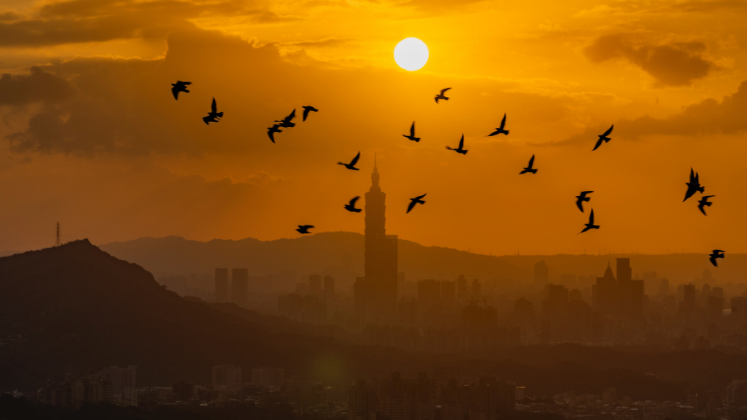
Image One Credit: Sunset in Taipei, Taiwan. Photo by TangChi Lee on Unsplash.
To break into Keck’s dense ethnography, one needs to understand his impressive theoretical coherency. He first outlines the intellectual history of the study of disease, suggesting that the three concepts and techniques applied to zoonosis – namely ‘prevention’, ‘precaution’ and ‘preparedness’ – derive from the giants in social science. Herbert Spencer represents the approach of prevention that privileges the authoritarian intervention of the state, justified by statistics and the ‘rationality of society’. Animal perspectives are completely displaced in this style of thought. Culling, emerging from this intellectual tradition, is the technique of prevention and the practice of ‘pastoral’ care that emphasises the state’s capacity to prevent the outbreak of animal disease through controlling animals. William Robertson Smith and Emile Durkheim, on the other hand, represent the method of precaution that emphasises the social approach and techniques to protect oneself from animal disease. Vaccination, administered by the state, is the technique par excellence in this tradition, where its effectiveness depends on the capacity of cells in each individual human body to remember the virus and thereby achieve immunity across society to the injected microbe.
Yet, for Keck, these traditions only stress the simple causal relation in zoonosis and neglect what animals could reveal about the disease. In order to understand the perspective of animals in the bird flu pandemic, he aims to find an ecological approach that encompasses relations between humans and non-humans. For this, Keck turns to Claude Lévi-Strauss’s conceptualisation of BSE, a zoonotic disease that first emerged in cattle in the 1980s in the UK and is colloquially known as ‘mad cow disease’, for inspiration. Keck positions himself in this genealogy of French anthropology, borrowing Lévi-Strauss’s insight to understand the infected animal as a ‘sign’ or ‘sentinel’ that signals the need to prepare for a catastrophe. Monitoring animals for signs is thus the technique of preparedness. Here, Keck mainly focuses on and distinguishes the technique of prevention ‘as the management and control of population in a territory through the use of statistics’ from preparedness ‘as the imaginary enactment of disasters in a community where humans take the perspective of nonhumans’ (7).
Keck, however, refuses to see animals as mere signs, since he attempts to understand how one could communicate with animals. Observing the emergence of the term ‘virus hunter’, Keck shows how microbiologists and virologists ‘hunt down’, track and collect information relating to virus mutation. The microbiologists and pathogens ‘communicate’ with each other through the process and pattern of mutation. Keck, therefore, draws an analogy between the anthropology of hunter-gatherers and these virus hunters, arguing that one should see ‘microbiologists […] not only in connection with public health officials […] but also as borrowing practices from those who work with animals’ (43). These techniques of preparedness – searching for signs and communicating through virus mutation – align with the logic of ‘hunting’ techniques. Nonetheless, this is not enough to understand the complex relations involved in zoonoses.
Data collected from observing viral mutation will be stored. The Worldwide Influenza Centre of the World Health Organisation (WHO) was built in 1948 as a ‘museum’ of viruses for storing, conserving and circulating data and flu virus samples to develop cures. If countries have no means to collect virus data amid the outbreak of zoonoses, this data allows microbiologists to anticipate future catastrophe as a technique of preparedness. Following his association of microbiologists with the practices of working with animals, Keck draws on a second analogy between a museum of virology and a museum of ornithology in relation to the anthropology of the museum. A museum of ornithology indicates and imagines the future extinction of species through birds. Birds, like viruses, are the ‘indicators of unforeseen problems’ (56). By understanding Keck’s line of thought, we may begin to grasp his perceptive and ‘shapeshifting’ ethnographic discussion of public health planners, microbiologists and birdwatchers, in relation to both the technique of prevention, which entails ‘sacrifice’, ‘scenarios’ and ‘storage’, and the technique of preparedness, which involves ‘sentinels’, ‘simulation’ and ‘stockpiling’.

Image Two Credit: Photo by Diane Helentjaris on Unsplash.
Conducting his multi-sited fieldwork between 2007 and 2013 in Hong Kong, Singapore and Taiwan, Keck visited and participated in the work of poultry farms, laboratories, birdwatcher communities and biosecurity drills. He observes that birds serve as sentinels on four levels. Birds send early warning signals to humans. Nonetheless, these sentinels are also confronted with pastoral techniques of prevention that emphasise culling birds and thereby ‘sacrificing’ animals for the sake of public health. At the level of the poultry farm, infected sentinel chickens – chickens that are not vaccinated – signal the loss of valuable livestock as commodity and food. Meanwhile, during the 2008 H5N1 outbreak in Hong Kong, public health officials viewed the infected chickens as a sign of pandemic, killing chickens as mere livestock. This reflects a pastoral logic of protecting the human from pandemic as a sacrificial ritual and a technique of preventing the spread of zoonosis.
Yet, birds are not just domesticated animals or livestock. They communicate with humans and signal wider environmental changes. Situated in the migratory flyways, Hong Kong is a perfect site for birdwatchers to observe the increased or decreased diversity of bird species in relation to the development of the territory over time. Keck, however, notes that sentinels could communicate false signals. When working with microbiologists, he learns that some pathogens manage to deceive sentinel cells and attack the immune system. To grasp these signals, sentinels should also be subject to other techniques of preparedness.
Drawing on a wide array of examples of simulation, Keck suggests that simulation allows microbiologists and birdwatchers to take the perspective of pathogens and communicate with animals through sentinel devices. Desktop exercises and real-ground exercises are the two main types of simulation. Through desktop exercises, microbiologists simulate viral evolution and imagine the future of viral mutation. These simulations are also enacted on the ground. Keck takes real-ground exercises practised by the Singaporean and Hong Kong health officials as ethnographic examples to demonstrate how the outbreak of H5N1 is simulated and managed. Tags and scenario cards are used to indicate participants’ positions and the required actions in the simulation. Real-ground exercises also involve the participation of wild birds. To achieve this seemingly impossible task, Keck illustrates how birdwatchers in Taiwan use fake spoonbills and decoys, training staff to handle the sentinel wild birds safely. Simulation in this sense moves beyond the pastoral military logic of controlling a predictable scenario or disaster. Instead, it is a hunting technique of preparedness to mimic how birds or viruses would act and how various actors could engage differently with the possible future.
Since simulation raises the question of the real and the fictitious in times of uncertainty, Keck finds that techniques of storage and stockpiling stabilise these uncertainties. Keck’s experience working in a museum allows him to attend to the analogy between museum anthropology and the practice of birdwatchers and microbiologists. As with museum specimens, in Taiwan bird hunters turn birds into taxidermic specimens and store bird images to produce knowledge of birds, their habitats and value for conservation. Like bird hunters, microbiologists hunt down and store past bird virus samples and bird flu strains to study their genetic sequencing in the hope of developing vaccines. Newly developed vaccines are stockpiled by the government in preparation for future pandemics. Stockpiling also implies the broader geopolitics in Asia, involving the Taiwan government in particular, as stockpiling ‘preserves its viral sovereignty’ by fencing off ‘bird flu strains coming from mainland China’ that may lead to the outbreak of regional zoonosis (146). In this sense, storage and stockpiling are both techniques of preparedness with different ways of imagining and preparing for the future.
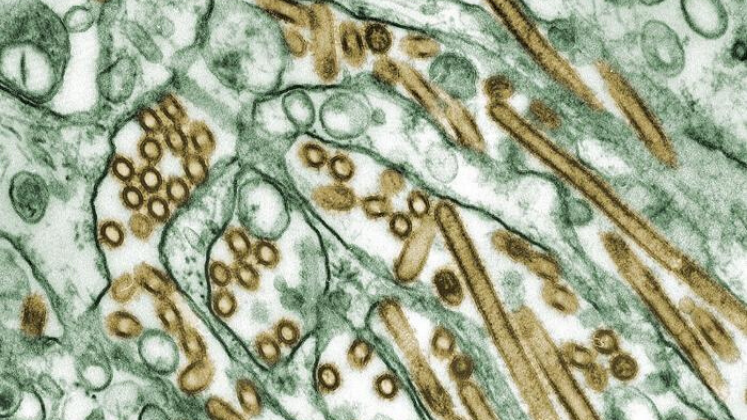
Image Three Credit: Digitally-colorized transmission electron microscopic image of Avian Influenza A H5N1 virus particles (seen in gold), grown in Madin-Darby Canine Kidney (MDCK) epithelial cells (seen in green) (CDC/ Courtesy of Cynthia Goldsmith; Jacqueline Katz; Sherif R. Zaki. Photograph by Cynthia Goldsmith, 1997, Public Domain).
By discussing what he calls the hunting techniques of preparedness and pastoral techniques of prevention, Keck successfully engages readers in complex and ambitious dialogues with, to name but a few topics, the anthropology of hunter-gatherers, museum ethnography, biosecurity and temporality alongside the mediation of animals’ perspectives, illustrating human dependency on other species. Keck’s book is, therefore, a notable and timely contribution, offering a unique perspective to the discussion of the Anthropocene. The architecture of Keck’s analysis on zoonosis is remarkably sophisticated. However, if Keck’s broader aim is to show how animals signal environmental changes and how one may take perspectives or communicate with non-humans, general readers who do not already subscribe to his theoretical orientation may lack the tools to comprehend the important ‘signals’ sent from Keck’s ‘sentinel’ book. The major analysis and argument are occasionally buried in multifarious sub-arguments and the overarching density of the work.
Whilst Keck is focusing on the anticipation and imagination of future pandemics through animals, I would like to consider what his book may tell us about an unpredictable pandemic outbreak. Reflecting upon the emergence and spread of COVID-19, as well as the response, one may cynically argue that techniques of preparedness are likely to prove fruitless, especially since it is incredibly difficult to pin down a ‘sentinel’ animal that signals future catastrophe when vectors of viruses are hard to trace. Although microbiologists actively send patients’ virus strains for ‘storage’ in order to understand the genetic sequencing and develop vaccines for ‘stockpiling’, it is fair to say that no one has been able to ‘simulate’ such a deadly and catastrophic pandemic.
Nevertheless, to allow readers to grasp the sophistication and rigour of the book, Keck’s approach may shed some light on a new form of human-animal relation engendered by an emerging disease control measure. Responding to the COVID-19 emergency, quarantine centres have cropped up around the world. The emergence of this particular type of regulation can arguably be deemed a ‘new’ type of cynegetic technique of preparedness, which I refer to as ‘snaring’, in addition to the techniques of ‘sentinel’, ‘simulation’ and ‘storage’ identified by Keck. For ‘snaring’, it is not animals that are the subject of the trap, but the potential human carriers of coronavirus. Instead of being viewed as purely human, these unknown carriers of disease are often seen in the public imaginary, with great fear, as ‘hybrids’ that bear the virus in a human body. With limited knowledge of the sources of zoonosis, hybrids become the replacement of ‘infected animals’ that need to be ‘trapped’ in order to cut ‘the invisible chain of infection’.
Increasingly, for instance, governments in Hong Kong and mainland China are seen building, or transforming infrastructure into, quarantine and isolation camps to contain and impede the spread of the virus. This prepares microbiologists and health officials to delve deeper into the carriers of the pathogen and potential actions for ‘killing’ the virus. If the trap mediates hunters and prey, as traps are the reification of the knowledge of hunters who take the perspective of animals (see Alfred Gell 1996), the camp not only ‘simulates’ the deadly impacts of virus carriers, but it also mirrors the logic and the type of state that is able to produce such massive ‘traps’ to slow down time and citizens’ mobility as well as capture potential virus carriers. This technique and concept of preparedness is also a form of infrastructure that combines the logic of ‘pastoral care’ and ‘preparation’ to project a version of a bio-secured future. The infrastructure of ‘the trap’ can be seen as the expansion of state intervention and the suspension of social life under the name of biosecurity, where one is no longer living but rather existing in this interlude period.
Critics may argue that Keck’s taxonomic model of zoonotic disease is not universally applicable and may not provide an explanation to our ever-changing COVID-19 pandemic situation. Nevertheless, in Avian Reservoirs, Keck provides us with a handy toolkit to further examine what conditions develop different techniques of preparedness when it comes to zoonotic disease and pandemics; to understand what the amalgam of pastoral and hunting techniques of preparedness entails; and to recognise how animals as well as the ‘hybrid’ bodies of those carrying COVID-19 signal the future of human beings and shape the structure of our lives and society.
Note: This review gives the views of the author, and not the position of the LSE Review of Books blog, or of the London School of Economics. The LSE RB blog may receive a small commission if you choose to make a purchase through the above Amazon affiliate link. This is entirely independent of the coverage of the book on LSE Review of Books.




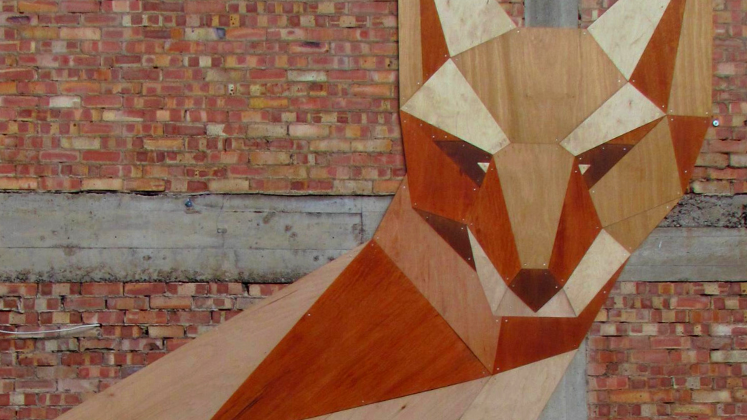
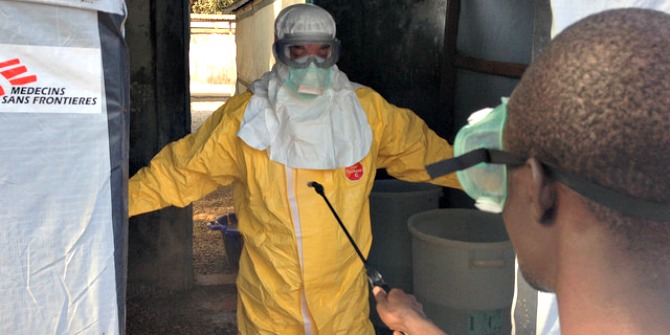
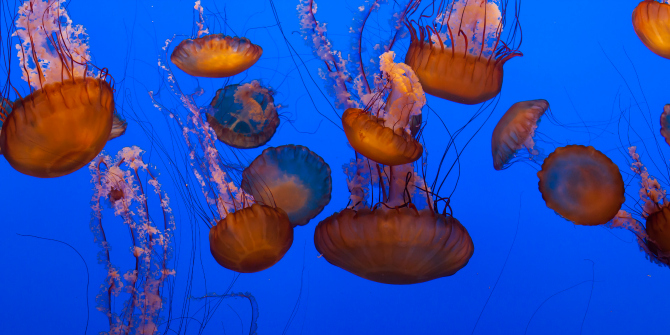

11 Comments